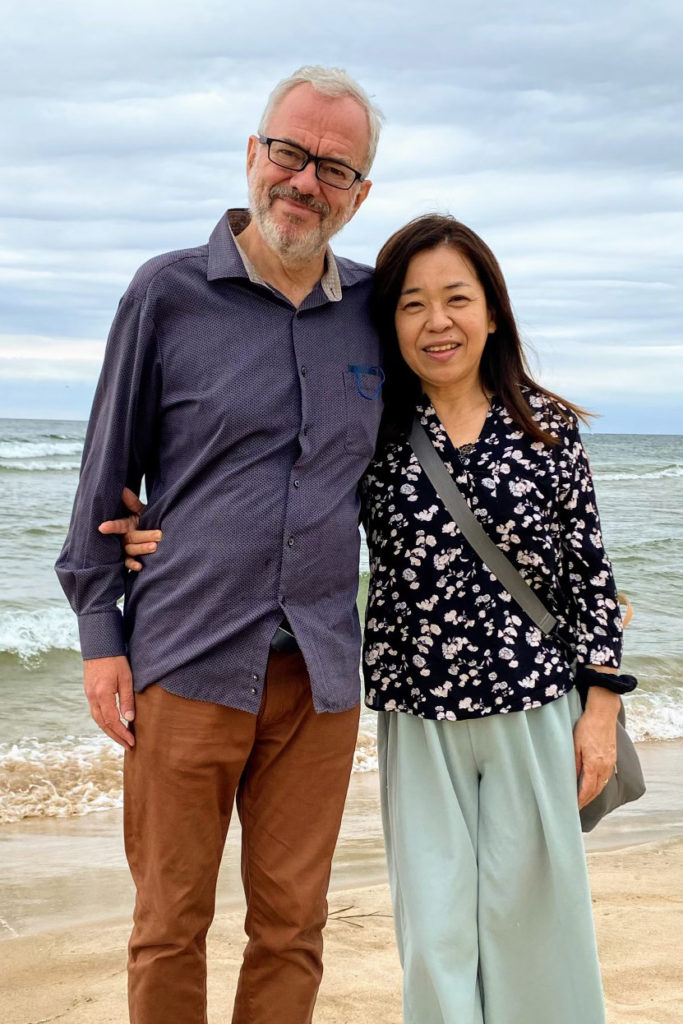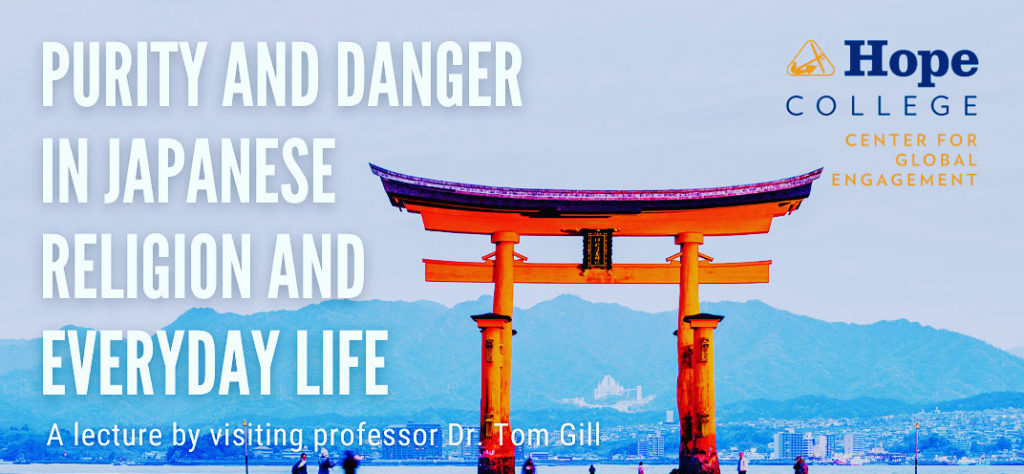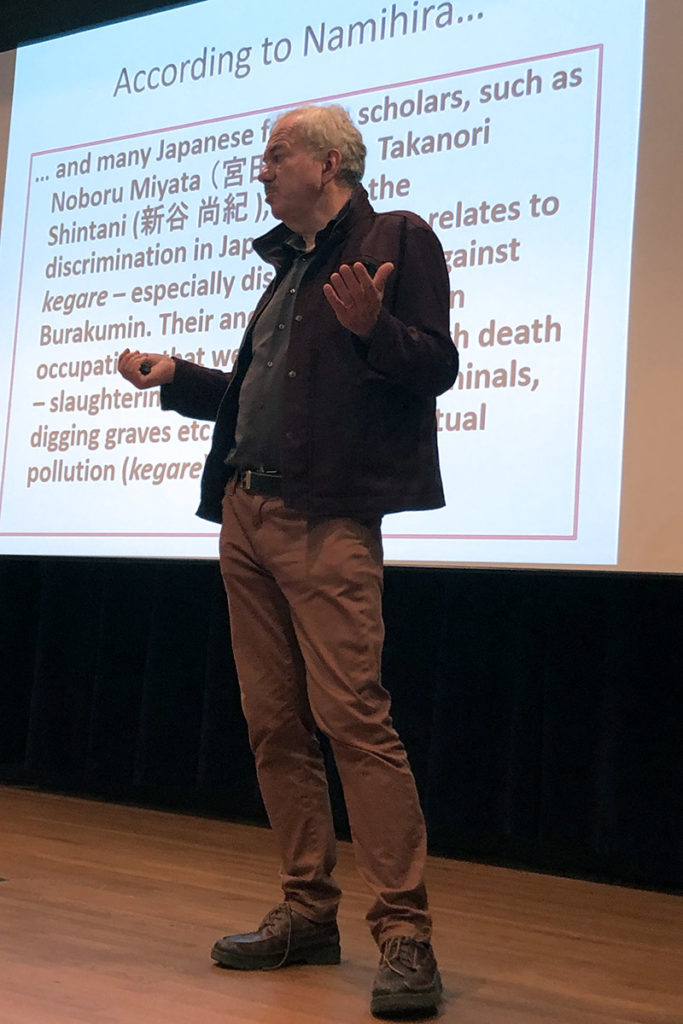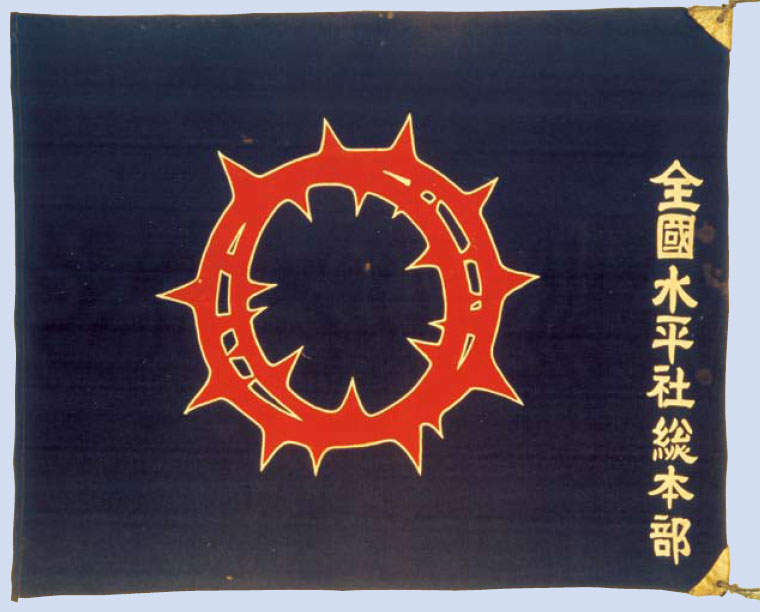Purity and Danger in Japanese Religion and Everyday Life
Posted byRoger Baumann October 29, 2021 Leave a commenton Purity and Danger in Japanese Religion and Everyday Life
 Dr. Gill and his wife Manami
Dr. Gill and his wife ManamiThis semester, the Department of Sociology and Social Work is hosting Dr. Tom Gill as a visiting professor in the department, joining us from Meiji Gakuin University in Japan. Dr. Gill is a social anthropologist trained at the London School of Economics. His scholarship in Japan has focused on ethnographic studies of casual labor, homelessness, and masculinity. More recently he has also been studying victims of the Fukushima nuclear disaster.
On October 28th, Dr. Gill gave a public lecture co-sponsored by the Fried Center for Global Engagement titled, “Purity and Danger in Japanese Religion and Everyday Life.” In discussing some of the cultural binaries that structure Japanese society, Dr. Gill demonstrated how time, space, and — most problematically — people come to be classified in terms of purity and impurity, noting the contrast with American culture (and others shaped by the Abrahamic religious traditions), where the cultural moral binary of good and evil prevails.

Dr. Gill began his lecture noting that about 75% of Japan identifies as “non-religious,” but he emphasized that this is not synonymous with “atheist” in Japan. And using the example of the discrimination faced by residents of the Fukushima Prefecture following the 2011 tsunami and nuclear disaster, Dr. Gill described the persistent power of cultural binaries along the lines of clean vs. dirty, pure vs. impure, and how they are manifest in Japanese culture. In spite of the lack of any scientific or rational basis for fears that exposure to radiation could be transmitted from one person to another, residents of Fukushima came to bear the stigma of impurity.
Dr. Gill explained this phenomenon through the lens of anthropologist Mary Douglas’ classic anthropological study, Purity and Danger (1966). The key takeaway from this framework, he explained, is the presence of cultural boundaries understood in binary terms, where the crossing of salient boundaries (e.g., from purity to impurity) produces visceral feelings of danger. While the United States — along with other countries shaped by the theistic Abrahamic religious traditions of Judaism, Christianity, and Islam — is guided by cultural binaries related to moral righteousness and wrongness (good vs. evil), Japanese society is guided by other binaries that reinforce notions of ritual impurity rather than moral wrongness.

In a culture that values newness and cleanliness — Japanese people love new cars and the most important Shinto shrine in Ise is ritually torn down and rebuilt every twenty years, Dr. Gill told the audience — purification is not about cleansing a literal or spiritual dirt, but rather a kind of inauspiciousness. This, Dr. Gill noted, might be classified not as religion by American observers, but rather as a kind of superstition. Through a series of compelling illustrations from Japanese history and culture, however, he showed how this set of cultural binaries — unfamiliar and unintuitive as they may be to American observers — explain the origins and persistent force of social divisions and hierarchies in Japanese society. This division matters in terms of how both space and time are conceptualized along the lines of the pure/impure binary. And, most importantly, it is also the basis for the categorization of people.
Dr. Gill’s ethnographic writing has included analyses of the significance of these cultural binaries for Japan’s Burakumin — an underclass of “untouchables” at the bottom of Japan’s traditional social hierarchy, stigmatized as “filth” and even “non-persons” related to their descent, physical location, and occupations connected to death (like undertakers, slaughterhouse workers, butchers, or tanners). In describing the 100-year-old movement for Burakumin liberation in Japan, Dr. Gill noted the movement’s use of Christian imagery, symbols, language, and moral categories into a non-Christian society, complicating the axes of traditional cultural binaries and the dynamics of social change.
 Crown of thorns flag of the Buraku
Crown of thorns flag of the BurakuNational Levelers Association (image: blhrri.org)
Brothers! Our ancestors pursued and practiced freedom and equality. They were the victims of base, contemptible class policies and they were the manly martyrs of industry. As a reward for skinning animals, they were stripped of their own living flesh; in return for tearing out the hearts of animals, their own warm human hearts were ripped apart. They were even spat upon with ridicule. Yet, all through these cursed nightmares, their human pride ran deep in their blood. Now, the time has come when we human beings, pulsing with this blood, are soon to regain our divine dignity. The time has come for the victims to throw off their stigma. The time has come for the blessing of the martyrs’ crown of thorns.Excerpt from the Buraku Declaration of Human Rights in Japan (“The Suiheisha Declaration”) (1922)
Thus, while deeply rooted and pervasive cultural meanings can create the conditions for marginalization, discrimination, and dehumanization, they can also be creatively redeployed to challenge entrenched power structures, systems of meaning, and social hierarchies through new and creative forms of reinterpretation and cultural innovation.Posted byRoger BaumannOctober 29, 2021Posted inEvents, Faculty
Post navigation
PREVIOUS POSTPrevious post:
Summer Research 2021
NEXT POST
